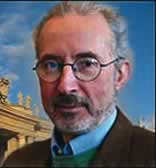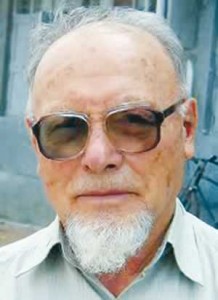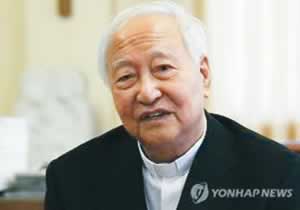South Korea, the Asian Tiger of the Church
On his website, Italian Sandro Magister reports on South Korea where the number of Catholics is growing at a staggering pace. With many thousands of new baptized adults every year. He includes a report of a great missionary Pierro Gheddo published in Avvenire - the paper of the Italian Episcopal Conference. (www.chiesa.espressonline.it)
ROME, April 18, 2012 – The seven years of pontificate that Benedict XVI will mark tomorrow are associated, in common opinion, with the general decline of the Church.
But this opinion is nurtured by a view restricted to the Christianity of the Old Continent: to a Europe that in effect has suffered the blows of a growing secularization.
If one simply widens the perspective, in fact, the reality appears different. In the past century the Catholic Church has experienced the most extraordinary phase of missionary expansion in its history.
At the beginning of the twentieth century, in sub-Saharan Africa there were fewer than 2 million Catholics. A hundred years later, there were 130 million.
And also on a worldwide scale, the twentieth century was for the Church a century of numeric explosion. From 266 million at the beginning of the 1900’s, Catholics reached 1.1 billion a hundred years later. An increase of a factor of four, more than the parallel increase of the planet’s population.
It is an expansion that shows no sign of stopping, and began in the 1800’s, precisely when the Catholic Church in Europe was undergoing the attacks of a culture and of powers strongly hostile to Christianity.
Today the context is analogous. For the Catholic Church in Europe, these are lean years. But in other regions of the world it is the opposite.
South Korea, for example, is a country in which Catholicism is growing at a dizzying pace. And precisely among the most active and “modern” strata of the population.
The report that follows – published on Easter by the newspaper of the Italian Episcopal conference, Avvenire– was written by one of the leading experts on Catholic missions in the world. A missionary himself, Fr. Piero Gheddo is today the director, in Rome, of the historical office of the Pontifical Institute for Foreign Missions.
He is the author of numerous volumes and collaborated in the drafting of the 1990 encyclical Redemptoris Missio of by John Paul II.
SEOUL, AN EASTER FOR THE RECORD BOOKS
by Piero Gheddo
There may be no other country in the world that over the past half century has seen growth as sustained as that of South Korea, including conversions to Christ.
From 1960 to 2010, the number of inhabitants went from 23 to 48 million; per capita income from 1,300 to 19,500 dollars; Christians from 2 to 30 percent, of which about 10-11 percent, 5.5 million, are Catholic; there were 250 Korean priests, today there are 5,000.
I first went to South Korea in 1986 with Fr. Pino Cazzaniga, a missionary of the Pontifical Institute for Foreign Missions in Japan, who speaks Korean.
Even back then it was a Church with many conversions, and it is still so today. Every parish has from 200 to 400 baptisms of converts from Buddhism each year. Most of the converts are city dwellers. Each year there are 130-150 new priests, one for every 1,110 baptized. In 2008, the proportion of Catholics exceeded 10 percent of South Koreans, and grows by about 3 percent each year. In 2009, the number of baptized reached 157,000, and 149 priests were ordained, 21 more than in 2008. More than two thirds of the priests are under the age of 40. “Over the past ten years, the Catholic Church in Korea has gone from three to five million faithful; in Seoul we are 14 percent,” Cardinal Nicholas Cheong Jin-suk, archbishop of Seoul, has said in an interview.
The Catholic Church in South Korea is the one that is growing most vigorously in Asia. There is full religious freedom in South Korea, and the secretary of the Korean episcopal conference, Bishop Simon E. Chen, told me that Koreans demonstrate a strong propensity for Christianity, because it introduces the idea of the equality of all human beings created by the one God. Moreover, both Catholics and Protestants participated in the popular movement against the military dictatorship, between 1961 and 1987, while Confucianism and Buddhism promote obedience to the established authority. Also, Christianity is the religion of a personal God made man to save us, while shamanism, Buddhism, and Confucianism are not even religions, but systems of human wisdom and of life. Finally, after the war between North and South Korea (1950 to 1953), South Korea, thanks to American aid, saw extremely rapid economic, social, and civil development, becoming in every way an advanced and even rich country, in which the ancient religions do not provide answers to the problems of modern life.
One characteristic of the Korean Church is the excellent collaboration of the laity in evangelization.
 The Church was born in Korea from a few Korean philosophers and diplomats who emigrated, converted to Christianity in Beijing, and then, after returning home, propagated the faith and baptized. From 1779 to 1836, when the first French missionaries arrived, Christians spread and then the persecutions came, but the habit of collaborating with the Church has remained. Today in Korea, someone who converts knows that he must join one of the groups, associations, or movements of the parish. The “passive” Catholic is not recognized. In Seoul, where there are more than 200 parishes, I was in the parish of the Salesians of Kuro 3-Dong, in a working class area on the outskirts of the city. The Catholics, already in 1986, were 9,537 out of about 150,000 inhabitants, and there were almost 600 baptisms of adult converts each year.
The Church was born in Korea from a few Korean philosophers and diplomats who emigrated, converted to Christianity in Beijing, and then, after returning home, propagated the faith and baptized. From 1779 to 1836, when the first French missionaries arrived, Christians spread and then the persecutions came, but the habit of collaborating with the Church has remained. Today in Korea, someone who converts knows that he must join one of the groups, associations, or movements of the parish. The “passive” Catholic is not recognized. In Seoul, where there are more than 200 parishes, I was in the parish of the Salesians of Kuro 3-Dong, in a working class area on the outskirts of the city. The Catholics, already in 1986, were 9,537 out of about 150,000 inhabitants, and there were almost 600 baptisms of adult converts each year.
The pastor, Fr. Paul Kim Bo Rok, told me: “In the parish we are two priests and four sisters, but the real work of mission and religious instruction is done by the laity, both in the eight courses of catechesis, taught at different times and by different people, and in the very active ecclesial movements, especially the Legion of Mary. Each year, we celebrate two or three rites of collective baptism of adults: each time the baptized are 200, 300, or even more, after about a year of catechumenate: that’s not much, but we can’t allow any more time because of the many requests for religious instruction. Deeper formation in the faith is given after Baptism, and is the task of the ecclesial movements. Becoming Christian means entering into a group that draws you in deeply, gives you norms of behavior and effort, gives you prayers to say every day. When one enters the Church one accepts everything. This is the Korean spirit: either you accept and commit yourself, or you don’t accept and go away.”
Fr. Paul continues: “In Korea, religion is something serious and demanding. It is true that there is the danger of formalism, but it is the entire culture of the people that is set up this way. Moreover, Christianity is the primary force that emphasizes the personal conscience and the freedom of the person. What are coming, instead, are threats opposite to formalism: secularism and practical materialism, which draw people away from the religious spirit. South Korea is seeing prodigious economic development, the poverty of thirty years ago has disappeared: today for us there is the passage to abundance and even to wealth. We must react with a deeper and more personal Christian formation. We are overwhelmed by the wave of conversions, and we are asking the Christian world at least for the aid of prayer.”
Baptisms are generally administered at Easter, Pentecost, and Christmas. In the parish of Bang Rim Dong in Kwangiù, on Easter of 1986 I participated in the Mass and in the Baptism of 114 adults with their children. A celebration of the people, with a long procession of men and women, boys and girls, dressed in white to receive Baptism. Songs, music, so much joy. In the Korean Catholic Church, the program “Evangelization Twenty Twenty,” the effort to convert 20 percent of South Koreans by 2020, is in full swing. They might not make it there, but the launch of this program in 2008 demonstrates of itself the enthusiastic faith of the baptized laity, because they are the driving force, and everyone knows it.
At Easter of this year, on Sunday, April 8, in Korea and in the world of the missions, tens of thousands of catechumens again entered the Church. Never be pessimistic about the future of Christianity and of the Catholic Church. We of the Old Continent are going through a crisis in our faith, but in the young Churches the action of the Holy Spirit is giving us an injection of hope and of Paschal joy.
Reprinted with permission



 Entries(RSS)
Entries(RSS)